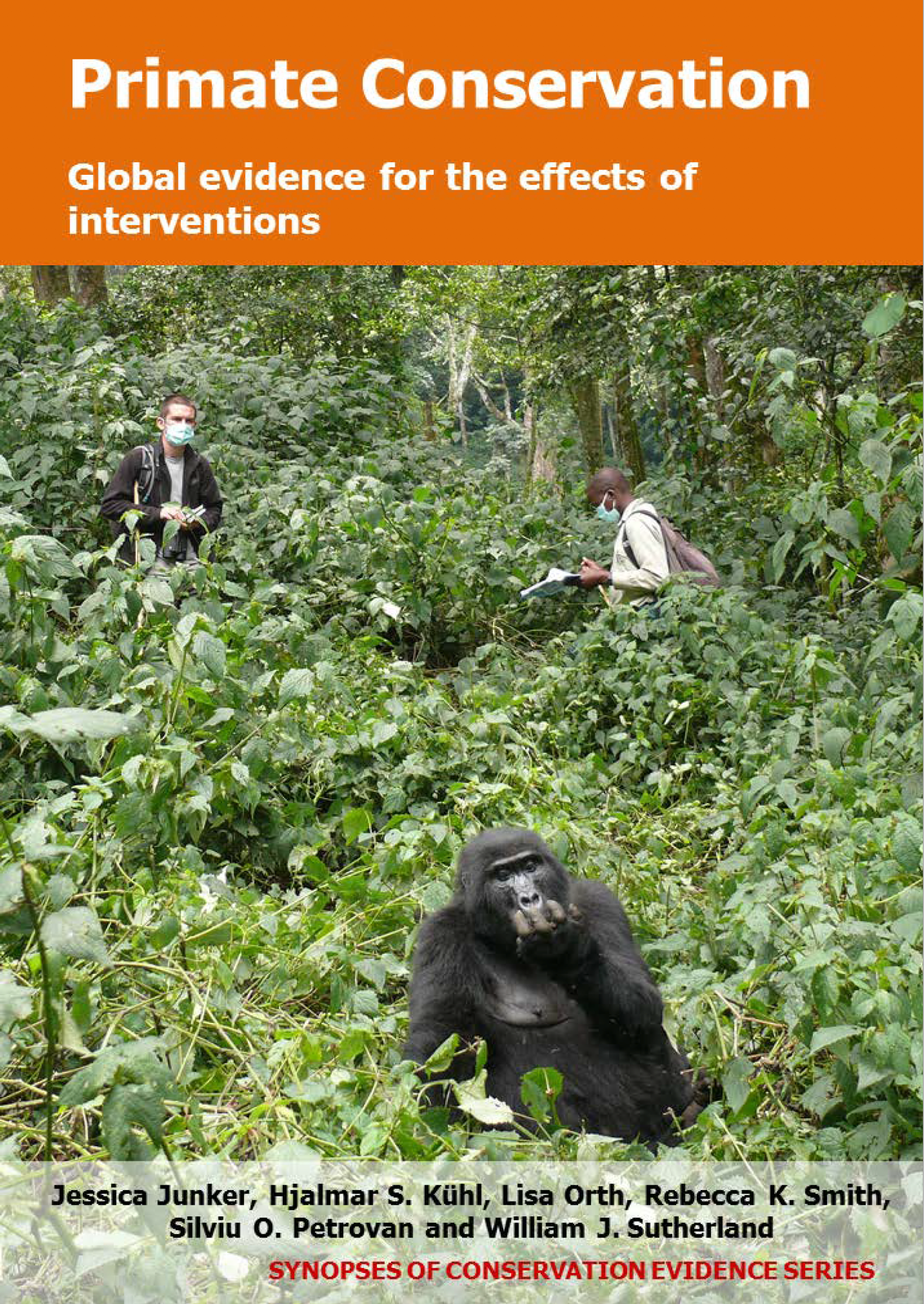Implement monitoring surveillance strategies (e.g. SMART) or use monitoring data to improve effectiveness of wildlife law enforcement patrols
-
Overall effectiveness category Unknown effectiveness (limited evidence)
-
Number of studies: 1
View assessment score
Hide assessment score
How is the evidence assessed?
-
Effectiveness
60% -
Certainty
30% -
Harms
0%
Study locations
Supporting evidence from individual studies
A before-and-after trial in 2009-2013 in tropical forest in the Mbe Mountains, Nigeria found that more Cross River gorilla Gorilla gorilla diehli and Nigeria-Cameroon chimpanzee Pan troglodytes ellioti groups were observed after the implementation of a system for law enforcement and monitoring. The number of observed gorilla groups and sleeping nests increased from 4 to 22 groups and from 29 to 80 nests. The number of chimpanzee groups and sleeping nests increased from 4 to 15 groups and 3 to 53 nests. The number of patrol days increased from 343 to 830 days, and patrol effort increased from 1,500 to 5,000 km/year. Encounter rates of wire snares, gunshots heard, used cartridges, and hunting camps, decreased from 1.3 to 0.27/km, 0.45 to 0.02/km, 1.56 to 0.08/km, and 0.05 to 0.002/km, respectively. No statistical tests were carried out to determine whether this difference was significant. The system used the Cyber Tracker software run on handheld computers with GPS capabilities for field data collection. Data collected with this system can be downloaded directly to computers and quickly analysed allowing timely production of feedback for patrol planning and implementation.
Study and other actions tested
Where has this evidence come from?
List of journals searched by synopsis
All the journals searched for all synopses
This Action forms part of the Action Synopsis:
Primate Conservation
Primate Conservation - Published 2017
Primate Synopsis





)_2023.JPG)














